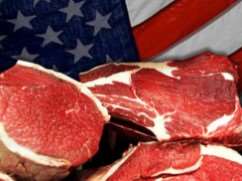
Dr. Derrell Peel, Oklahoma State University Extension Livestock Marketing Specialist, offers his economic analysis of the beef cattle industry. This analysis is a part of the weekly series known as the "Cow Calf Corner" published electronically by Dr. Peel and Dr. Glenn Selk. Today, Dr. Peel explains the initial impacts the Chinese market will have on the US beef business, and how he expects it to evolve over time.
"Step one of U.S. beef exports to China is completed. The first step of opening any international market is the political process of negotiating access and agreeing on the conditions and stipulations of that access. Step one establishes the game and the rules of the game.
"Let the game begin. Step two follows with the economic process of markets determining the value, size and timing of trade. The restrictions and requirements for U.S. beef to enter China mean that initially only a small portion of U.S. beef production will qualify for export to China. Increasing the qualified supply will necessarily involve additional costs for the industry. The pace of export growth will depend on the value of U.S. beef in China and that, in turn, will depend on which products (cuts and quality) are demanded. Exporters will likely move rather cautiously initially until the market values and export procedures become more certain. The additional costs to qualify for export are typically incurred for entire animals (carcasses) even though only certain products are exported, meaning that the export value must be sufficient to cover the additional costs for non-exported portions of the carcass.
"In general, not much is known about the composition of Chinese demand for U.S. beef. What mix of middle versus end meats; Choice versus Select; and offals will make up Chinese demand for U.S. beef? However, given that unofficial flows of U.S. beef have been entering China in recent years, some beef packers may have insight, at least initially, into beef product demand in China. It will likely be a moving target for many months.
"These unofficial product flows pose additional questions about the timing and volume of beef exports for the first few weeks or months. It is possible that unofficial flows will convert quickly into official exports in which case apparent initial volumes of exports to China may simply displace export volume currently being transshipped through other countries. It is possible that the unofficial flows will continue and be augmented by new official exports. It will be important to look comprehensively at export volumes across countries to understand the net effect. It is even possible that China will move quickly and aggressively to stop unofficial flows which could happen before official flows have developed and could actually result in a temporary reduction in net beef exports. The next few weeks/months will no doubt be very dynamic.
Click here to see more...